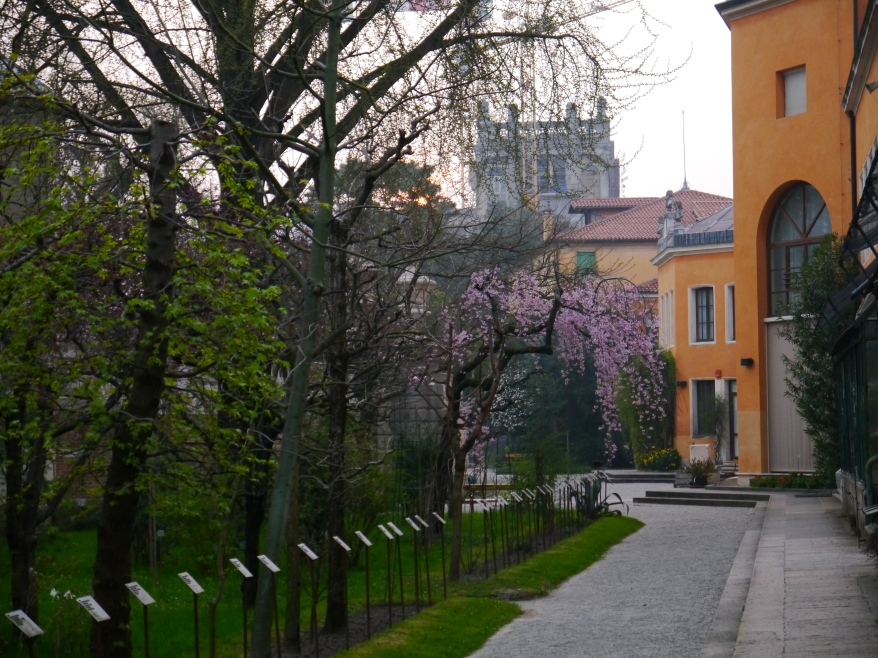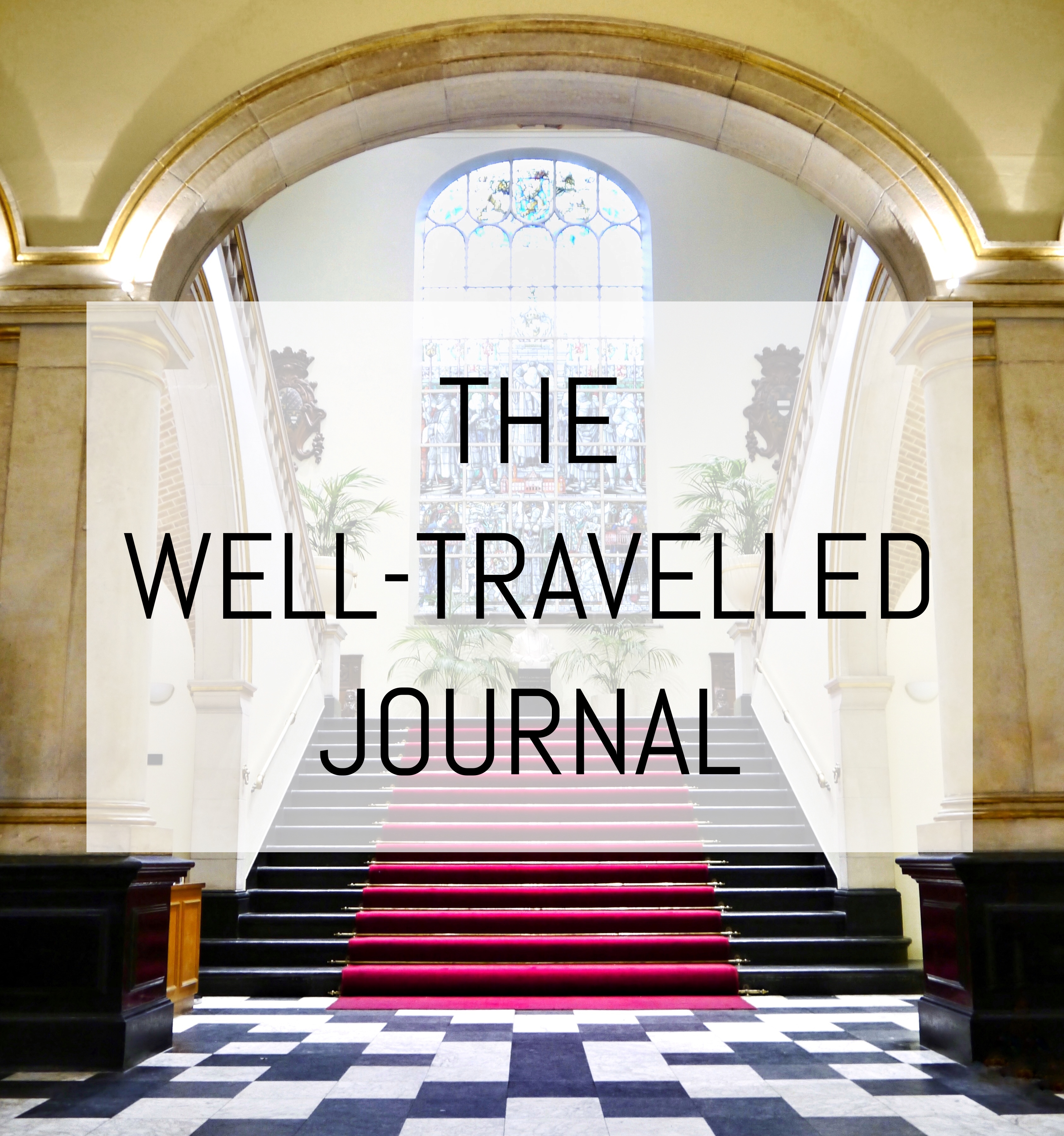How to Spend a Weekend in Padua (and Why I’m Dying to Move Back to Italy!)
If you saw my Postcard of the Week on Monday then you’ll already know that I spent last weekend sauntering around the Italian city of Padua (Padova in Italian). Now, I’m already a huge Italophile, having spent a total of 12 months living there over the past couple of years. And Padua didn’t fail to enchant me – I’m just as in love with Italy as I ever was and potentially even more so. The weekend away was a treat from Discover Padova, the city’s official tourism website, who chose me as one of four winners of their blogger competition, and not only did I get to visit a new part of Italy, but I was also very reassured to find out that I haven’t forgotten my Italian! If I’m honest, I prefer Italian to my other languages, Spanish and Portuguese, even if it is less useful on the world stage.
How to get to Padua
I flew to Venice Marco Polo airport and then took a 60-min bus, costing €8.50 to Padua’s main bus station. From there it’s a short walk to the city centre or get a bus/taxi to anywhere further afield.
Where to stay in Padua
I was generously hosted by the lovely 4* Methis Hotel, well-located on one of the canals right next to the Astronomy Observatory, and only a 10-min walk to the heart of the city. Rooms cost from €89 per night with breakfast included. The hotel has some great design features (such as my divine, entirely royal blue bathroom!) although there’s so much to see in the city that you won’t be spending much time in your hotel.
How to explore the city
I had a 48h Padova Card, which costs €16 (or €21 for 72h) and allows you free entrance into 12 sites and discounted entry into a further 24, as well as free public transport of parking, if you’ve brought a car. Well worth it.
____________________
So, I found myself in Padua, late on Friday evening, having just checked into the Methis Hotel. What next? I got my first mouthful of Italian cuisine at the Terrazza Carducci trattoria, just off the Prato della Valle, a huge statue-lined, landscaped lawn oval-shaped square. I returned there on Saturday to find a large weekly market in full swing, selling everything under the sun, and on Sunday there was a monthly antiques market, which I much preferred. But I did take an after-dinner stroll to orientate myself.
On Saturday morning I headed to Giotto’s famous frescoes inside the Scrovegni Chapel, which were painted in 1303-05 and are apparently considered among the most celebrated works in the history of art. You need to book well in advance (although the ticket is free if you have the Padova Card) and you should arrive early in order to see a 15-min film in the museum’s multimedia room. I remember learning about the Scrovegni Chapel in an Italian text book while at university, and I also studied Dante’s Inferno in 2nd year, in which Dante accuses Scrovegni’s father of the sin of usury and places him in hell. An entire wall of the Chapel is a description of heaven and hell, in response to Dante’s accusation, as Scrovegni, himself also a usurer, was keen to avoid to avoid the same fate of a fiery hell and is thus depicted by Giotto as entering heaven. Sadly no photos were allowed inside the Chapel, although here is a photo to give you an idea.
I adore art and could look at it all day, although religious art is probably my least favourite genre. However the story-telling nature of the frescoes in Scrovegni’s Chapel keeps your interest and the two short films you’re shown as introduction will enthuse even the least art-lover of them all, so I highly recommend you visit the Chapel even if you’re not normally keen on religious art. I really enjoyed studying Dante and his graphic descriptions of the various circles of hell, so having that connection really made this a highlight for me, and I’m now determined to finish Dante’s trilogy by reading Purgatory and Paradise as well.
I then headed to the Basilica di Sant’Antonio, which I featured in my postcard from Padua on Monday. The remains of the miracle-worker Saint Anthony attract a small crowd of Catholics who come to pray for loved ones to be healed and who place photos around his tomb. My favourite part however was the cloisters, which reminded me of a peaceful monastery far from the reality of civilisation.
Leaving behind the Basilica, I followed along one of Padua’s scenic canals which in one direction take you to the stunning Euganei Hills and in the other direction all the way to Venice.
Leaving the canals, I headed to the three piazze (Piazza delle Erbe, Piazza della Frutta and Piazza dei Signori) that are full of markets stalls every day except Sunday. Separating two of the piazze is the gigantic Palazzo della Ragione, on whose ground floor is a daily food market, underneath a cavernous, frescoed room that used to be the law courts and now plays host to exhibitions.
This weekend saw the opening of a highly-anticipated exhibition on Renzo Piano, a leading architect not only in Italy but worldwide, and he gave a lecture in the Aula Magna of Padua’s ancient university which filled the streets with people and excitement. While I loved the fact that Italians are cultured enough to get so excited about an architect (would this happen in the UK I ask?), it did mean that Palazzo Bò was completely shut off for tourists. I had been really keen to visit the university as it’s the second oldest university in all of Europe – it was founded in 1222, while Bologna beat them to it in 1088. It was also the world’s first university to award a woman a degree, in Philosphy, to Elena Lucrezia Piscopia back in 1678! This did impress me I have to say – very progressive thinking for the typically patriarchal Italians. Palazzo Bò is shut on Sundays so I sadly never got a chance to see the Aula Magna nor the six-tier, 16th-century anatomy theatre which is said to be fascinating.
Disappointed to not be allowed into the university, I remedied the situation by turning my attention to the important matter of lunch. Heading into the very gentrified Jewish Ghetto, I picked a cute enoteca called Il Gottino for a typical piadina and an Aperol Spritz, my favourite Italian drink. Aperol is an orange spirit invented in Padua, which you mix with Prosecco, soda water and a slice of orange for a refreshing midday or pre-dinner cocktail. I polished this off and completed the meal with a pit-stop in Grom, an Italian ice-cream maker that I was simply addicted to while living in Modena. My favourite flavours? Stracciatella, Bacio and Nocciola.
Fancying a breath of fresh air and some greenery, I wandered over to the oldest Botanical Garden in Europe (also free with the Padova Card), which the university created in 1545 to analyse poisonous plants. Nearby is yet another grand church, the Basilica and Abbey of Santa Giustina.
A friend of mine spent her Erasmus year in Padua (lucky girl!) so I had asked her for insider tips on where to eat – her unequivocal reply was to eat at the Pizzeria al Duomo. The groups of locals waiting outside for a table were testament to how good the pizza is, and I chose their signature dish, Duomo: tomato, mozzarella, sundried tomatoes, cured beef, sheep cheese, raw mushrooms and various types of lettuce and chicory. Oh my goodness, I had died and gone to heaven…
The Piazza dei Signori and the Jewish Ghetto area, just south of the three piazze, are both great areas for a few drinks, as small bars full of lively Italians spill out onto the quaint cobbled streets. One of the many things I loved about Padua was how Italian it feels. During my after-dinner stroll it hit me that I’d barely seen another tourist all day. The city’s beauty hasn’t been tarnished, as many other Italian cities have, by garish souvenir shops or jarring English menus outside restaurants. I would recommend you get there quickly, to see it as a real, living city and let’s keep our fingers crossed it doesn’t go the way of its neighbour, Venice.
After a good night’s sleep and a fresh continental breakfast at the Methis Hotel, Sunday morning brought plenty of sunshine with it and I headed towards the neoclassical style Caffè Pedrocchi, one of the most famous historical coffee-houses in all of Italy, that, as luck would have it, was reopening that morning to great fanfare and to the sound of a quartet and a grand piano. Upstairs you can visit the elegant Piano Nobile, (also free with the Padova Card) and the Museum of Risorgimento. On Saturday night, during an intrepid adventure through a temptingly open door, I accidentally gatecrashed a beautiful wedding reception taking place in the stunning ballroom of the Piano Nobile.
Having seen the locals’ excitement at the arrival of Renzo Piano in the city, I decided to check out his exhibition in the Palazzo della Ragione, which in any case is an impressive structure covered in frescoes and worth a visit anytime (included free in the Padova Card). My favourite part of the Palazzo was its outdoor gallery terrace and its view over the Piazza delle Erbe. The exhibition was equally intriguing, as among other buildings Renzo Piano also designed the Shard, London’s tallest skyscraper, which I visited last summer (see my blog post here).
And despite the university being closed, I did take a good look through the huge iron bars that guard the Palazzo Bò and I also snuck into the town hall for a little look around.
In the excellent weather on Sunday, Padua was gleaming. At every turn there was another beautiful view or another fascinating market and I thought it best to absorb the atmosphere at a more relaxed pace. I settled myself down at a table in prime position in Piazza dei Signori, with a view of the Clock Tower and plenty of sunshine. There is nothing better than a chilled Aperol Spritz in the sun, in an Italian piazza, with lunch on the way. I sat back and contemplated my weekend in Padua. I had visited so many different places and sights that I hadn’t really taken the time to digest it all. As occurs on most Sundays,my blissful happiness was slightly tinged with the though of an impending Monday, and I dreaded having to fly back home and leave this dream-like Italian city that appears as if straight out of a film. I would absolutely love to live in Italy and I’m convinced that I will do again one day… In any case, I leave you with this photo of my Aperol Spritz, a photo that manages to encapsulate so many aspects of my lovely weekend in Padua.
I’d like to say a very big thank you to Discover Padua for such a fantastic weekend and for letting me explore a lovely part of Italy. If I had had another day I would have loved to take a boat down to explore the Euganei Hills to the south-west of Padua and take a dip in the thermal spas the area is famous for. From the photos it looks like a more verdant version of the hills around Tuscany and some of the villas and castles you can visit look stunning! I will simply have to return soon!
















































I lived in Padova for 3 month in 2012. I was an au pair there and I am in a good relationship with the family. Last year I went back for 2 weeks and I will go back in the end of May for 2 weeks again 🙂
LikeLike
Oh wow what a place to live and that’s great that you can go back too! I’d love a return trip to Padua.
LikeLike
Great review. We will use it as a guide for our Padua experience – starting tomorrow for 4 days. Must try the ice cream, I think we like the same flavours.
LikeLike
I hope you have a brilliant trip and let me know what you think of Padua!
LikeLike
Had a wonderful time in Padua. We have travelled extensively in Italy and found that Padua was probably the most vibrant city we have visited, particularly in the evenings. We stayed at the Majestic Toscanelli close to the Piazza Delle Erbe, upgraded to a suite – very nice! During our stay we were blessed with good weather, spending much time outdoors admiring the buildings, the piazze and strolling along the canals. Of course the good weather meant we had several ice creams. The Grom ice cream you receommended was probably the richest we have ever had, particularly the Bacio. We also experienced some delightful meals.
Having purchased our Padova Cards we visited, and were impressed by, the main sites including – Scrovegni’s Chapel (of course), Basilica di Sant’Antonio, Orto Botanico plus several Museums. The only slight disappointment was that many of the statues in the Prato della Valle were covered as they are being cleaned of graffiti.
We also visited Vicenza as I has always wanted to visit the city of Palladio and in particular the Teatro Olimpico.
We would like to return to the area and cruise the Brenta canal, visit the Euganean Hills and some of the villas in the area.
LikeLike
Oh that sounds like a lovely trip! So pleased that some of my recommendations were useful and that you saw lots of the main sites. I loved how easy it was to walk around Padova! Your description is making me miss Italy…
LikeLike
Great blog! I would suggest to have a travel guide “Padua Top 95 Spots” it has lots of tips, is easy to read, has a good selection of attractions and points of interest that can make your visit a pleasurable one..
You can have a look here at the below link:
http://amztk.com/padua
LikeLike
Wonderful ! Thank you Virginia !
LikeLike
Thank you, Madam !
The famous poet Goethe (1786, Italian journey) about Padua: Prato della Valle, il Bo, Botanical Garden, Palazzo della Ragione…
“The great square, called Prato della Valle, is a very wide space, where the chief fair is held in June. The wooden booths in the middle of it do not produce the most favourable appearance; but the inhabitants assure me that there will soon be a fièra of stone here, like that at Verona. One has hopes of this already, from the manner in which the ‘Prato is surrounded, and which affords a very beautiful and imposing view. A huge oval is surrounded with statues, all representing celebrated men who have taught or studied at the University. Any native or foreigner is allowed to erect a statue of a certain size to any countryman or kinsman, as soon as the merit of the person and his academical residence at Padua are proved (…) With all its dignity, the University gave me the horrors as a building. I am glad that I had nothing to learn in it. One cannot imagine such a narrow compass for a school, even though, as the student of a German university, one may have suffered a great deal on the benches of the auditorium. The anatomical theatre is a perfect model of the art of pressing students together. The audience are piled one above another in a tall, pointed funnel. They look down upon the narrow space where the table stands; and, as no daylight falls upon it, the professor must demonstrate by lamplight. The botanic garden is much more pretty and cheerful. Several plants can remain in the ground during the winter, if they are set near the walls or at no great distance from them (…) The hall of audience in the town-house, properly designated by the augmentative Salone, is such a huge enclosure, that one cannot conceive it, much less recall it to one’s immediate memory. It is three hundred feet long, one hundred feet broad, and one hundred feet high, measured up to the roof, which covers it quite in. So accustomed are these people to live in the open air, that the architects look out for a market-place to overarch. And there is no question that this huge vaulted space produces quite a peculiar effect. It is an enclosed infinity, which has more analogy to man’s habits and feelings than the starry heavens. The latter takes us out of ourselves; the former insensibly brings us back to ourselves…”
LikeLike